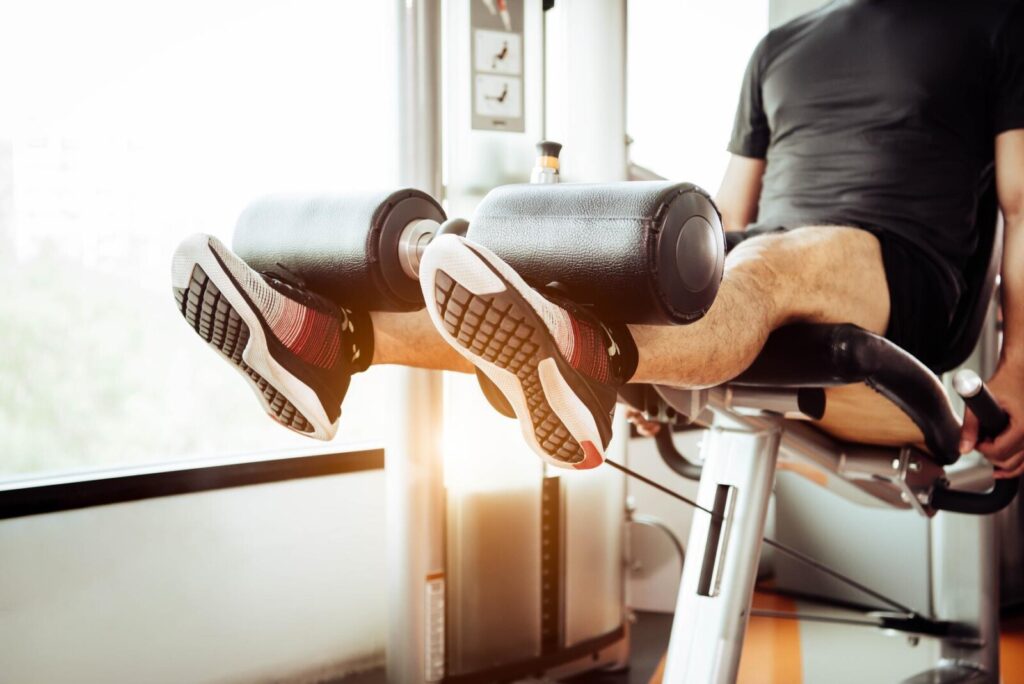In this post we look at why getting stronger helps reduce pain, particularly if you’re suffering with chronic or ongoing injuries.

At a glance
Resistance training helps reduce pain by triggering the release of natural pain-relieving chemicals (endorphins and related substances) and updating your brain’s threat perception.
Improving tissue doesn’t always change pain. You can see improvements in tendon structure and muscle strength without feeling better—so strength gains alone don’t explain pain relief.
Education and reassurance matter. Understanding that pain doesn’t necessarily mean injury can provide relief.
Strength training builds confidence. Controlled exercise—prescribing load, range, and speed—helps prove to your brain that movement is safe.
Resistance training is a powerful tool—not just for strength and structure, but to help retrain your brain.
Introduction
There are few things in life that we know are certain, apart from death and taxes, as Benjamin Franklin famously once said.
Most of us believe that getting stronger will help if we have physical issues like sore knees or painful shoulders however.
As you might imagine, I’m firmly of that opinion. The question is why?
You might have heard things like getting stronger helps support your joints. Or resistance training helps you maintain better posture, or improves how you move.
Whilst these things might be true, it’s not clear how they would reduce pain. There’s certainly little evidence for this.
We know that resistance training releases substances that can reduce pain. The same substances that some pain medications attempt to mimic.
This may explain transient changes in pain, but doesn’t necessarily explain the long term effects.
Why, for example, does a particular exercise cause pain when you first start training—even with minimal resistance—yet three months later, the same exercise with five times the weight causes no pain at all?
So why does getting stronger help reduce pain?
This was the subject of a recent presentation given by world leading tendon expert, Professor Peter Malliaras.
In it, he describes research that found significant changes to tendon health from a resistance training programme. Interestingly, this had no correlation to pain.
In other words, you could observe structural changes in a previously injured tendon and strength gains in the associated muscles—but this had no connection to what the person actually felt.
I’ve discussed before the nebulous relationship between what you see on a scan and what you actually feel.
And that you can feel better without your scan changing.
This suggests that pain can persist even when scans show improvements in the tissues.
What else might be responsible for reducing pain?
Have you ever booked a doctor’s appointment, only to find the pain you were seeking help for has inexplicably improved?
Or visited the doctor, been reassured that your pain isn’t anything serious, and then found it dissipate almost immediately?
This study explored this effect by explaining to patients their shoulder pain did not indicate tissue damage and they were safe to move. This improved reassurance when compared to a structural explanation, which emphasised a connection between tissue damage and pain.
It doesn’t seem to matter whether education is focused on pain science, or more on pathophysiology either. Just the fact that the patient is receiving accurate information about their condition and how best to manage it has been shown to improve outcomes.
So education and reassurance appear to be critical aspects in reducing pain.
Generally speaking, interventions that combine both education and exercise do best, however. So what additional value does resistance training provide?
The role of resistance training in reducing pain
Let’s first think about what pain represents. In the case of chronic injuries, it’s unlikely to represent tissue damage as we’ve seen.
It’s more accurate to think of pain as a sensitive alarm in this context. A bit like a car alarm that keeps going off on a windy day.
The role of exercise is to provide a compelling case that you’re safe and there’s no cause for er… alarm.
Resistance training helps you do this in two ways:
First, it gives you a level of control that is unmatched by other forms of exercise. Enabling you to isolate joints and prescribe how far and how fast you move, and under how much load.
This means you can accurately increase the dosage, whilst taking care not to trip the alarm. A bit like that scene in Apollo 13 where they’re trying to power up the lunar module, with just enough voltage so as not to drain the battery.
Second, it begins to update the story in your brain. It’s difficult to conclude that your Achilles tendon is weak and vulnerable if you’ve just single-leg calf raised your own body weight for 8 repetitions.
This combined with the knowledge that pain in this context doesn’t mean injury, provides the ideal conditions to reduce pain in the long term.
Summary
Whilst resistance training is an invaluable tool in helping to reduce pain, it may not be for the reasons that we once thought.
Its most significant role might be to convince your brain that there’s no need to trigger a pain response as you’re perfectly safe.
Apply it with care and pay attention to your symptoms. If you have an increase in pain that lasts longer than 24 hours, you may want to back off a bit.
In time you will see progress.